Alfa Romeo’s spunky little Giulietta has just arrived down under. There’s currently two models on offer, the entry level Giulietta, priced from $36,990 (not including delivery or statutory fees), while the powerful “Cloverleaf” QV model starts at $41,990. Both models can also be optioned with metallic paint ($995) and a full leather/sunroof package ($4000).
In the base spec you get a 125kW 1.4 litre MultiAir engine capable of reaching 100km/h in 7.8 seconds. A lighter foot will reward you with a combined fuel consumption figure of 5.8l/100km. That’s quite reasonable performance, really.
If that’s not enough, though, the 173kW 1750TBi unit is the one for you. As the name suggests, it’s a 1.75 litre four-pot turbo, and can propel you to the speed limit in 6.8 seconds. With a healthy 340Nm of torque on tap from 1900rpm you can access that power at virtually any time, as well. When you’re not in a mad rush you can expect to sip fuel at the rate of around 7.6l/100km.
Actually, the QV looks the value proposition here. For an extra five grand you get the go faster engine along with sports suspension (10mm lower), fancy seats with red stitching and microfibre trim, a Bose stereo and 18″ alloys to go over your flash red brake calipers.
It’s a pretty car, the Giulietta, but for similar pricing, does it make more sense than a comparable Volkswagen Golf, for example? Your heart might well say yes, but we’d love to hear if you’d actually go through with the deal.
More pics and detail from Alfa Romeo after the break. Alfa’s latest price list is also available.
Romeo brings his Giulietta To Australia
Alfa Romeo has reborn one of the most evocative car names in automotive history with the arrival of the Giulietta in Australia and endowed it with a wealth of performance, styling and technology to ensure that it worthy of both its evocative name and the task of taking over the small car mantle that started with the classic AlfaSud and includes the award winning Alfa Romeo 147.
“There is no doubt that the new Alfa Romeo Giulietta has very large shoes to fill,†says Andrei Zaitzev, General Manager of Alfa Romeo in Australia. “It carries one of the all-time great car names which graced some of the best cars of the last century and it must pick up the reins of a line of a cars that started with the AlfaSud, a true classic in its own right, through to the Alfa Romeo 147. It also steps into one of the most challenging sectors of the market, the prestige small car sector.â€
“But there can be little doubt that the new Alfa Romeo Giulietta is fully equipped to succeed. The Giulietta has styling, both inside and out, that can only have come from the genius of Italian design; it is powered by two acclaimed and award-winning engines, the MultiAir and 1750 TBi units that set new standards for performance, economy and emissions and it sits on a new platform and chassis to ensure it has the handling, roadholding and natural balance of a thoroughbred,†explains Mr Zaitzev. “Add a comprehensive standard equipment list and a benchmark price and it clear that the 21st Century Alfa Romeo Giulietta is ready to open a fresh chapter in the catalogue of classic Alfa Romeo sports cars.â€
The heart of the success of the new Alfa Romeo Giulietta is an all-new platform that encompasses the chassis, the floorpan and the basic structure of the car as a whole. The new Compact platform employs a combination of advanced engineering and sophisticated technical solutions to ensure the Giulietta can accommodate the needs of all customers in this category. The result is a model that combines impeccable safety credentials, Italian style, comfort and functionality with the dynamic qualities taken for granted in Alfa Romeos.
In addition, every customer can adapt the new car to their specific driving requirements thanks to Alfa Romeo’s D.N.A. selector. But this is just one of the electronic systems that the Compact platform was designed to integrate and exploit. Others, fitted as standard to every model in the range, include the Electronic Q2 differential and the VDC (Vehicle Dynamic Control) system.
To ensure that the Giulietta fully lives up to the Alfa Romeo performance and sporting image, the new model arrives in Australia with a choice of two engines. The 1.4 litre Alfa Romeo MultiAir engine in its 125 kW form arrived last year to power the top version of the Alfa Romeo MiTo, the QV. In the Giulietta its blend of performance and economy makes it the ideal power unit for the entry level Giulietta. It provides a 0-100 kmh time of just 7.8 seconds, yet its official fuel consumption is as low as 4.6 litres per 100 km on the open road cycle and with a combined fuel figure of 5.8 litres per 100 km, it is as all but an economy car, something also illustrated by its CO2 figure of 134 gm per km.
The Alfa Romeo Giulietta QV gains the latest version of the 1750 TBi engine first seen late last year in the Alfa Romeo 159, with its output lifted from 147 kW to 173 kW, while the torque peak is outstanding for both its potency – 340 Nm in the DNA’s dynamic mode – and for the engine speed at which it is achieved, just 1900 rpm. This means that the Giulietta QV not only offers excellent straight line performance – the 0-100 kmh time is 6.8 seconds and it maxes at 242 kmh – it also provides a quality of in-gear performance that is more redolent of performance provided by a 3.0 litre V6 engine. Yet, like its smaller sibling, this engine merely sips at the fuel tank. Its combined fuel figure is just 7.6 litres per 100 km.
But the Giulietta isn’t just about being fun to drive. Both Giuliettas share a long and healthily list of standard equipment. Electric windows all-round along with dual zone air conditioning and electrically heated and adjustable door mirrors are all standard as are automatic dipping interior mirror, fog lights, alloy wheels, rear parking sensors, leather steering wheel with audio controls, automatic wipers and lights, as well as the Blue&Me™ hands-free infotainment system.
The Cloverleaf model gets sports suspension lowered by 10 mm, Sports Seats in mircofibre and leather with red stitching, Bose HiFi, dark tinted windows, sporty red brake callipers and 18†spoke design alloy wheels with a dark titanium finish.
Whichever the model, owners will get one of the safest cars on the road.
The new Alfa Giulietta was recently awarded a EuroNCAP five-star crash safety rating and an overall score of 87/100: an impressive result that makes it the safest compact car built to date in its class.
The rating is even more significant considering that since 2009, EuroNCAP has adopted new judgment criteria composed of four areas of accident assessment, namely Adult Occupant, Child Occupant, Pedestrian Protection and a new area: Safety Assist. Injury avoidance and mitigation functions, such as seat belt reminder, ESP and speed limiter, are also rated. Achieving a five-star rating will become increasingly tough year by year (2009, 2010-2011, 2012). In this scenario, the rating achieved by the Alfa Giulietta (97% Adult Occupant, 85% Child Occupant, 63% Pedestrian Protection and 86% Safety Assist) means that the car will also have a five-star rating in 2012 when the assessment system will have reached maximum severity.
This major accolade yet again confirms Alfa Romeo’s special commitment to all aspects relating to the protection of all road users. The Alfa Giulietta was designed and built to obtain maximum passive and active safety performance.
Thousands of hours of virtual simulations have gone into the creation of the new Compact platform, which is making its debut in the Giulietta. The quality of virtual design has been materially confirmed by running 200 tests on components and subsystems, some 150 Hyge slide shock test simulations and more than 80 crash tests (frontal impact, side impact, roll-over and shunting, taking various speeds, different types of obstacles and the need to protect occupants, physically very different from one another, into account). These numbers confirm Alfa Romeo’s profound commitment to making the new Giulietta one of the safest cars in Europe by ensuring that it contains the most advanced safety systems.
Six airbags are standard (two of which are Multistage), plus three-point seatbelts with double pretensioners and load limit limiters, and SAHR (Self Aligning Head Restraints), a new second-generation device built into the backrests of the front seats that moves the head restraints closer to the occupants’ heads in the event of an impact, to lessen the effects of whiplash. There is also a highly significant contribution to occupant and pedestrian protection provided by the body, the bonnet, the doors and the dashboard crossmember, in addition to the seats and steering column.
The efficacy of all these systems is maximised by a three load line front structure that guarantees structural uniformity and consequently uniformity of response in the event of frontal impact, regardless of the type of obstacles or vehicle that the car is in collision with. This is a breakthrough in partner protection, because the vehicle is less ‘aggressive’ when crashing into the front or side of another vehicle, and in self protection, because uniform deformation makes the retaining systems more effective, regardless of the type of accident.
Finally, in the field of preventive safety, the new Giulietta uses headlights with Daytime Running Lights that are automatically switched on when the engine is started – to meet a specific European standard that will come into force in 2012 – and LED tail lights, brighter than conventional bulbs, for extra safety.
The Giulietta has a full complement of airbags plus an array of electronic devices designed to let drivers extract the maximum from their Alfa Romeo while staying safe at all times. There’s ABS anti-lock braking with Electronic Brake force Distribution (EBD); Vehicle Dynamic Control (VDC) – Alfa Romeo’s interpretation of Electronic Stability Programme; Cornering Brake Control (CBC), Dynamic Steering Torque (DST), Hydraulic Brake Assistance (HBA) and the new Pre-Fill function for the brakes.
It ensures that drivers can concentrate of getting maximum pleasure out of their driving while safe in the knowledge that the car is looking after them.
The Alfa Romeo Giulietta arrives in the Australia market with a price excluding statutory charges and dealer delivery costs of $36,990 and the range topping Giulietta is priced at $41,990 excluding statutory and dealer delivery charges.
Downloads
- Alfa Romeo Australia price list, valid from 17 January 2011 (200kb PDF)
The Alfa Romeo Giulietta in Detail
RIDE AND HANDLING
- All-new platform
- Weight saving technology throughout
- D.N.A. system standard for extra adjustability
The Alfa Giulietta sits on an all-new platform called Compact which will underpin all future Fiat Group mid-size vehicles and so has a high degree of modularity for multiple applications. From the outset the aim was for it to be ranked best in class for handling, steering feel, performance to weight ratio, ride comfort, noise, vibration and harshness (NVH), active and passive safety and climatic comfort.
This enables the Giulietta to offer two different types of driving experience. The Giulietta with the 125 kW MultiAir engine sits on a ‘comfort’ chassis while the QV has a more sport-oriented set-up, featuring 10mm lowered suspension.
This has been possible because the latest Alfa Romeo Giulietta platform has been built with 90 per cent of its structure employing either high or ultra-high strength materials. This has led to the Giulietta having a minimal (1.5 per cent) weight increase compared to its smaller, less lavishly equipped predecessor, the Alfa 147.
A magnesium dashboard support shaves 6kg; giving the pedal board a plastic support along with a plastic clutch pedal saves 3kg; and a new rear seat back that employs thermoplastics in both structure and cushions pares 7kg.
Aluminium has been employed in the MacPherson front suspension pillars, making them 8kg lighter than the 147. At the rear a sophisticated multi-link suspension solution has been used because it ensures the best possible exchange of forces between the road and tyres for excellent handling, while also offering good ride comfort and minimal boot intrusion. Manufacturing the wishbones and rear cross member from aluminium has reduced weight by 10kg compared to conventional multi-link systems used by competitors.
This has an impact on performance. Keeping weight, particularly that of non-suspended (unsprung) masses, to a minimum, gives even greater ride comfort. Improved stiffness and low mass give the structure a high natural frequency to give good vibration performance and insulate the cabin from the road, reducing driving noise.
The electric power steering system is also new. This employs two pinions on the steering column. The control pinion mechanically connects the steering wheel and rack for direct and precise steering that feels natural. The second power pinion transmits the torque generated by the electric motor to the rack. The result reduces fuel consumption by 3 per cent compared to a regular hydraulic set-up, gives variable performance depending on driving conditions and speed, and allows the steering to be influenced by the car’s electronic systems.
Brains
The new platform has been specifically designed to integrate and optimise different electronic systems in order to make the Giulietta one of the safest and most enjoyable drives in its sector. The brains behind this is Alfa Romeo’s D.N.A. system which is fitted as standard across the entire range and acts on the engine, brakes, steering, suspension and gearbox to allow drivers to hone the car’s responses to the conditions.
For sporty reactions, it offers Dynamic mode; there’s Normal for the urban environment and All-Weather for maximum safety in low grip conditions. It achieves these adaptations by modifying the operating parameters of the engine, steering, brakes and Electronic Q2 differential.
Normal mode is designed for relaxed driving, so every component controlled by the DNA system is in its regular configuration. This offers a lively engine, discreet Vehicle Dynamic Control (VDC) and Dynamic Steering Torque that controls oversteer. By simply moving the switch positioned ahead of the gear lever to Dynamic, the VDC and Anti-Slip Regulation (ASR) become less intrusive, the engine is made more responsive, the steering enjoys less power assistance for a sportier feel, and the Electronic Q2 system is enabled.
This works in conjunction with the VDC and uses the braking system to simulate the behaviour of a Limited Slip Differential. When the driver accelerates through corners it constantly distributes torque between the driving wheels, modulating the braking of the inner wheel while feeding power to the outer loaded wheel. The result is better traction and a more agile feeling from behind the wheel. The steering also helps make the Giulietta feel sportier by sensing lateral acceleration that’s greater than 0.6g and providing increased resistance to the steering wheel to help the driver’s feel of the road, particularly through fast bends.
D.N.A.’s Dynamic setting also activates a new function called Pre-Fill. This has been designed to give the brake pedal the feel of a racing car. It recognises that the driver is about to brake when the accelerator is released and increases the pressure inside the braking system by between five and seven bars. This reduces pedal travel by 30 per cent and ensures quicker braking response.
On its third setting, All-Weather, DNA makes the ASR more responsive and ensures the Giulietta is easier to control on low grip surfaces.
ENGINES
- Two Euro 5 engines
- Class-leading performance and economy
- Return of the ‘1750’
The latest Alfa Giulietta has a range of five high performance engines, all of which conform to the latest Euro 5 emissions criteria.
The most powerful petrol engine in the range is the 1750 TBi, a twin overhead camshaft, direct injection, variable valve timing engine that brings the classic 1750 capacity back to the Alfa Romeo range but with a modern twist. This innovative turbocharged unit provides more horsepower and torque per litre than any other four-cylinder petrol engine found in this class of car.
The resulting performance is equivalent to a three-litre while economy remains in line with a compact four-cylinder engine.
At the core of this power unit are a number of major innovations. It makes far better use of the turbocharger than conventional turbocharged petrol engines thanks to new scavenging technology. An ECU installed with ultra-modern engine parameter management software monitors and optimises fuel dosage, ignition advance and timing. This ultra-precise valve timing generates a direct flow of air from intake to exhaust manifolds, activating the variable geometry turbocharger instantly. Maximum torque at 1500 rpm is 70 per cent greater than a conventional turbo engine, with response times more than halved. And maximum torque can be accessed at only 1900 rpm, dramatically improving driveability at low engine RPM.
This engine also employs direct injection with innovative seven-hole injectors to help reduce emissions. And it has dual variable valve timing while the next-generation turbocharger optimises the use of exhaust pressure waves to increase torque at low speeds.
While the 1750 TBi is the undoubted jewel in the Giulietta’s crown, there is another gem – the 1.4 litre MultiAir engine.
Giulietta owners keen on cutting costs while still wanting plenty of power will find that the 1.4-litre TB MultiAir engine with its fixed geometry turbocharger ticks those boxes. It combines a small cubic capacity with a high power output, 125 kW, yet emits just 134 g/km of CO2. This is thanks to the MultiAir system which could be as important to the development of the petrol engine as common rail was to diesel power more than a decade ago. MultiAir takes the control of engine ignition to previously unthinkable levels of efficiency. Compared to a conventional petrol engine of the same capacity, this technology boosts power by 10 per cent and torque by 15 per cent, yet slashes fuel consumption and emissions both by 10 per cent.
All engines feature a state-of-the-art manual six-speed gearbox. This is from a new family of three axle transmissions that have an improved change quality and are more compact than transmissions with two axles. The six-speed also means that at motorway speeds the engine revs lower than with a five-speed box, giving less noise and lower consumption.
INSIDE
- Handsome and practical
- Class leading occupant comfort
- Well equipped throughout the range
Alfa Romeo’s aim has been to guarantee that any journey undertaken in the Giulietta should be a pleasure for driver and passengers. The interior space was devised to make it practical for everyday use, while inspiration from the 8C Competizione ensures it maintains the firm’s core strength of driver appeal.
The result is a car that has best-in-class headroom for tall drivers when the seat is pushed back and lowered, and is equally class topping for rear leg room. It is also ahead of its rivals for noise suppression thanks to a sound-proofing film in the windscreen, thicker side windows, and damping material to counter body vibrations.
Carefully crafted materials use subtle shades to make the interior feel light and therefore spacious. And it doesn’t just look good; it feels good too thanks to enhanced ergonomics ensuring every switch is ideally located for driver access. The main switches, which share their design with the 8C Competizione, are grouped together at the centre of the dashboard for easy access.
Ahead of the driver there’s a sporty three-spoke steering wheel while the seats are supple yet still supportive. To make the Giulietta easy to live with, it’s been crammed with storage solutions. In front of the gear lever, on the centre console and in the doors there are open compartments. There are closed compartments on top of the dashboard, under it opposite the front passenger, and in the front and rear arm rests. The front storage bin may be cooled with dual-zone climate control.
Optimum
The Giulietta range is split into two equipment levels, Giulietta and Giulietta QV. Standard equipment across the range is comprehensive but a lot of thought has gone into differentiating the various models. One example is the steering wheel. It’s vital for transmitting the feel of the car to the driver, so each trim level gets a different looking and progressively sportier one.
No Giulietta driver will feel short-changed when it comes to kit. The Giulietta features remote central locking and boot release, electric windows front and rear, height adjustable driver’s seat, 60/40 split folding rear seats and split climate control air-conditioning which has been completely revised so that it now keeps the passenger compartment at the optimum temperature while consuming 30 per cent less fuel than a conventional system.
The standard Guilietta also offers a steering wheel with ‘infotainment’ system controls, chrome effect window sills, cruise control, 17†Turbine design alloy wheels with 225/45 R17 tyres and the Blue&Me™ hands-free system with voice recognition and media player with USB port.
Finally, top-of-the-range QV versions add to Veloce specification with Cloverleaf badging, lowered suspension, red brake callipers, dark tinted windows and 18†Spoke design alloy wheels with a dark titanium finish and 225/40 R18 tyres.
Blue&Me is the Fiat Group’s ground-breaking hands-free system that allows mobile phones and sound system to be accessed and controlled either from the steering wheel or using Bluetooth and advanced voice recognition and is standard equipment on all variants. There’s a choice of two navigation systems.
The Giulietta is a bigger car than its predecessor and this is reflected in its luggage space. At 350 litres it’s on a par with its main competitors and 16 per cent bigger than the Alfa 147. Usefully, it’s a regular square shape and its width of 1022 mm is 21 per cent up on its predecessor.
SAFETY
- Most comprehensive equipment in its sector
- Integrated safety engineering from the platform up
- Vast array of electronics limit potential for accidents and damage
One of the cornerstones of the Alfa Romeo Giulietta is class-leading safety. During its development the car underwent 15,000 hours of mathematical modelling, 80 crash tests, 150 tests on a HyGe slide and more than 200 tests on components and sub-systems. This has been reflected in its five-star EuroNCAP performance.
As a result every model features the most comprehensive range of safety equipment in the segment. This includes six airbags (front multi-stage, side and curtain), five three-point seat belts with double pretensioners and load limiters, a collapsible pedal unit and steering column, a second-generation anti-whiplash system, and Isofix attachments.
To absorb energy from low speed impacts and support the bumper in a collision with pedestrians, there’s a third load path element. This allows the front to deform uniformly, making the car less ‘aggressive’ in head-on and side-on collisions. But because engineers have used aluminium for elements surrounding the front beam, 8.5kg has been pared from the weight. The rear bumper beam and third load path energy absorption elements have been made from thermoplastic Xenoy, giving a weight reduction of 4kg compared with a more traditional solution.
Every effort has been made to prevent Giulietta drivers being involved in an accident in the first place. Thus the hydraulic power assisted braking system comprising two crossover independent circuits has been specifically designed for progressive braking with shorter stopping distances.
The size of the brakes varies according to the engine. The 125 kW 1.4-litre MultiAir is fitted with 305mm self-ventilating discs and cast iron floating callipers and 264mm solid rear brake discs and cast iron callipers. The most powerful version in the range, the 173 kW 1750 TBi features 330mm self-ventilating front discs with aluminium fixed callipers. The rears are fitted with 278mm solid discs, again with cast iron callipers.
Sophisticated
The ABS anti-lock braking system that governs these brakes is one of the most advanced currently available. It has four active sensors and features Electronic Brake force Distribution (EBD) to spread braking force over all four wheels. It also adapts to the prevailing conditions, depending on grip and brake pad efficiency.
In addition to these fundamentals, every vehicle in the range features a sophisticated suite of electronics designed to reduce the chances of an accident taking place and improve occupants’ safety if one does.
This is spearheaded by Vehicle Dynamic Control (VDC). As Alfa Romeo’s ‘take’ on Electronic Stability Programme (ESP), this system remains in the background monitoring tyre grip in longitudinal and lateral directions, the car’s yaw and the angle of the steering wheel. These are then compared with set parameters so that it can judge whether the situation is about to become unsafe.
An integral part of VDC is Anti-Slip Regulation (ASR). This employs the ABS anti-lock braking sensors to calculate the degree of slip. If it finds excessive power is causing both front wheels to slip, it decreases the throttle opening. If only one wheel is slipping the appropriate brakes are applied.
The Giulietta’s VDC also works in conjunction with Dynamic Steering Torque (DST). This improves both safety and handling by working alongside the VDC to provide feedback torque through the steering wheel that helps the driver respond to critical situations before VDC intervention is needed. Combined with its Mu-Split control function (MSF) it’s particularly effective when, for instance, two wheels are on ice and two on tarmac.
Another of the ways the Giulietta combines safety with performance is courtesy of the braking system. The Hydraulic Brake Assistance system increases brake circuit pressure under emergency braking situations to shorten stopping distances. And the system includes a Hill Holder which automatically simulates a traditional hill start by stopping the car rolling backwards on an incline.
DESIGN
- Inspired by the past, designed for the future
- Dynamic like a coupe, practical like a saloon
- Innovative light show
The Alfa Romeo Giulietta is a unique blend of sportiness and style that draws inspiration from the firm’s rich heritage and brings it into the 21st Century. Yet despite styling which inherits much of its emotion from the 8C Competizione supercar, the Giulietta is a practical machine with excellent on-board space and comfort.
The front is typical of the new generation of Alfa Romeos, forceful but attractive with an off-set number plate and a brand new interpretation of the classic shield grille suspended between the air vents and headlights.
In profile the Giulietta has the dynamism and fluidity of a coupe, despite having all the practicality of a five door. This is further enhanced by the concealed rear door handles, muscular wheel arches and deep side skirts.
The rear is similarly beefy, giving the Giulietta the appearance of a car that really grips the road. The bumper meanwhile accommodates the number plate and integral exhaust tail pipes.
This is complemented by head and tail lights that employ LED technology. Compared with conventional bulbs, these lights are brighter, more reliable and don’t use as much power, thereby cutting running costs. The Giulietta also features Daytime Running Lights that will become a European standard in 2012. These guarantee maximum visibility but use less energy.
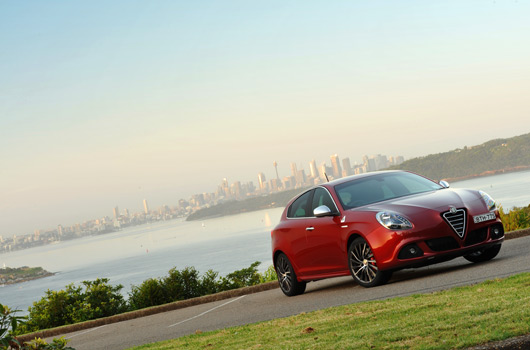
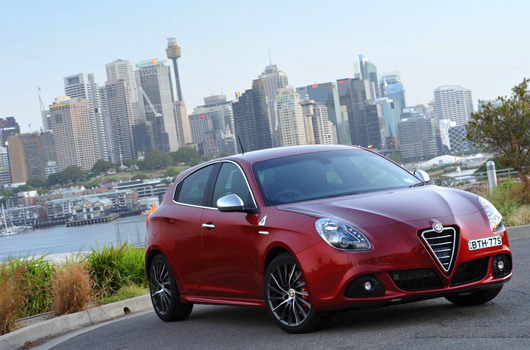
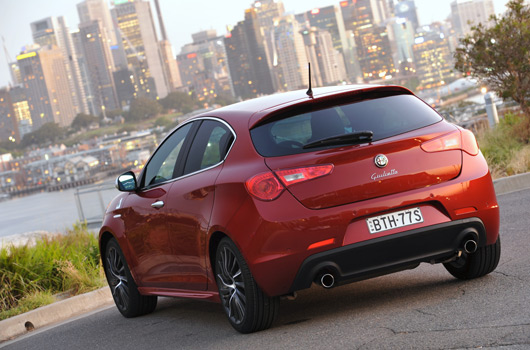
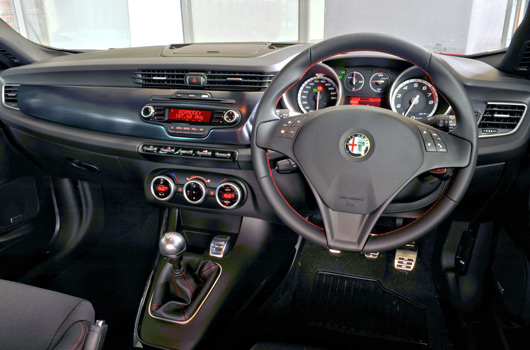
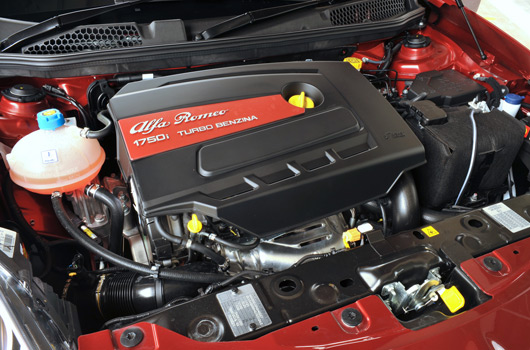
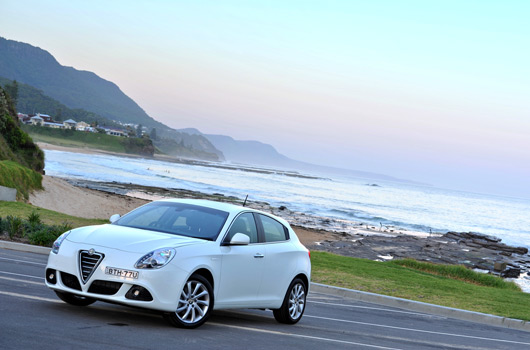

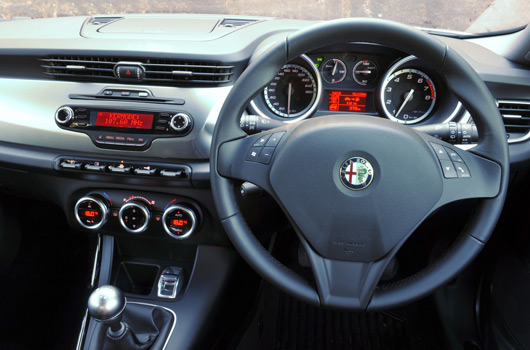
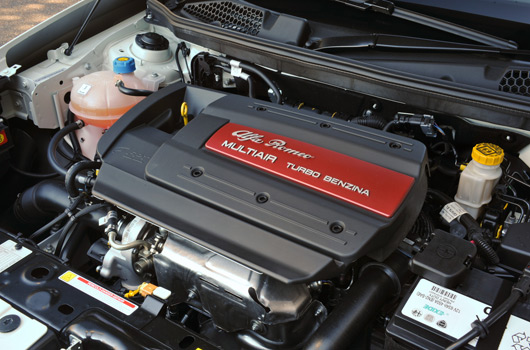
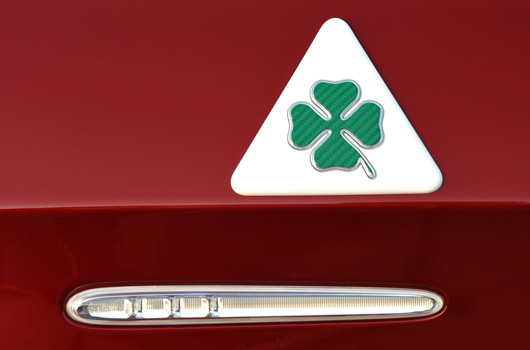
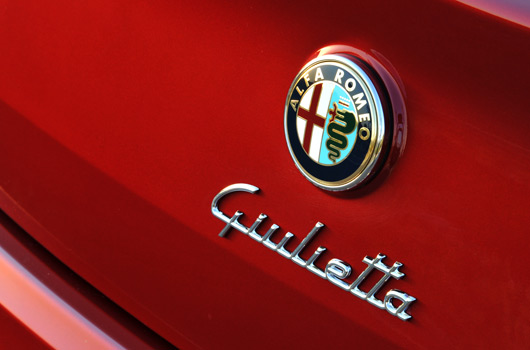
32 replies on “Alfa Romeo Giulietta launched in Australia”
I think it’s great value in comparison to the Golf. Look at all the included options and then compare the same spec golf.
And you get a car that looks much better and unique 🙂
It looks like an Alfa that can finally keep up with the other Europeans. Unfortunately I think Alfas generally still have pretty poor resale in Australia. Show me a 12-18 month old car with 15,000kms though, and I’d probably buy one.
I’m not sure if I like it. It’s nice and ugly at the same time. I’m not even sure if that makes sense but some of the details look a bit over designed to me.
dan – in the long run, this car will cost you alot more than the golf. rest assured.
Drove one (1750 QV) this past Saturday. Surprisingly good, fast, well put together, but just lacks a little in the dynamic dept compared to a GTI. Great looking in the flesh and way more stylish than the Golf. But would you, could you…? Yes, and be different. Heard a few DSG horror stories so all you germanophiles hold judgment. The old resale nugget will be an interesting study in 3-4 years. There will surely be 200 used GTI’s vs 10 used QV’s on Car Sales ! Hehe.
yep, I’d tap that
Spare parts for this car in a few years when they only sell 37…..?
Bing a panel and wait months for the new panel?
No thanks.
Intelligent input there Tank Engine. Do you use a waterproof keyboard to prevent damage from the dribble coming out of your mouth?
Hmnn, definitely a good candidate for second hand buy a couple of years time. The QV is pick of bunch I think.
Yes, I’d take one, even if the resale value takes a dive as soon as it leaves the show room. Why? It’s different.
renault clio cup is better choice for people who beg to be different.
i love the clio!
Sorry ‘b’.
Didn’t realize the world revolved around your opinion and those who oppose it receive anonymous slander.
Grow up.
Dearest Tank Engine,
I didn’t realize that you were psychic and could accurately confirm the age of poster ‘B’ and inform him that he does indeed need to grow up.
However, I agree with ‘B’, who seems to be a good judge of e-character, given the uninformed, unintelligent, stuck in the past nonsense like your comment rightly deserves nothing less than ridicule.
In short, go give yourself an uppercut.
Warm Regards,
Drew Halloran
How about everyone lightens up a little. 😉
Nah, box on…
htfu tank!
no, really. everyone relax. we are all civilised adults here.
Here is my stuck in the past and uninformed opinion based on some facts.
Volume Sales:
– Alfa globally sold approx. 102,000 cars in 2009 vs. approx. 203,000 in the year 2000.
– From the FCAI, Alfa averaged a little over 100 cars per month in Australia in 1H 2010 in a market that sold approx. 90,000 cars per month in the same period.
Reliability:
What Car? Reliability Survey, UK 2010 for cars 10 years old and younger.
Alfa 31st out of 32 makes, 2009 result 28th out of 30.
“ Alfa has a poor track record in our reliability surveys. This year its worst model, the GTV(’96 – ’03), recorded a shocking 77 failures per 100 cars, with the GT (’05 – ) just behind at 68 per 100. Just under a third of all Alfa failures were down to the axles and suspension, with engine faults the next biggest issue – causing more than 15% of problems.â€
Resale:
’06 147 twinspark 4dr manual is 46% of its value (Private sale, high end of range)
’06 Golf Sportline 4dr manual is 56% of its value (Private sale, high end of range)
Source: Redbook Australia.
I’m a fan of Neville Crichton both for his passion for cars and his business acumen. I’d love to have a old school GTA in the garage as a weekender but an Alfa as a daily driver where I need reliability and availability – no thanks.
Based on Alfa reliability and small volume sales in Australia they will always struggle – you’ll have it off the road more often, parts availability will be patchy based on the model range and sale volumes and you’ll have less money on resale.
So I’ll stick with my opinion.
Tank your still dribbiling shit because there is no problem with parts availability for modern alfas.. i dont know what makes you think this.
Had my 147 for 8 years, no problems with reliability or quality. No door handles fell off. Its time that the reliability story was dumped. Its also time that the resale crap was dumped. Just traded on a Giulietta 1.4 and got a better trade in on the 2002 147 than my friend did for a 2003 Golf. Reviews of the Giulietta claiming that the back doors are flimsy are rubbish, as are the other comments regarding a crummy dash, absolute rubbish. The Giulietta has a quality finish, fantastic fun to drive with heaps of guts and is also way way way more stylish. Who looks at a golf? People are constantly checking out the Giulietta!! This is a class act, time to move on knockers!!
[…] understood the 4C GTA will source its power from the Giulietta line up with a 1750 TBi four-cylinder turbo tweaked to provide in excess of 250hp. That might not […]
beautiful car and well made pictures 🙂 love it
hello from Croatia :))
I’ve driven the Giulietta QV and sadly it’s a crushing disappointment. Yes it’s beautiful, but Alfa have been so fixated with building a Golf rival that instead of building the best Alfa in years, they’ve given us a “B” grade Golf instead. The Alfa may look way better, but it’s the GTI that has the cuore and the brio, whilst these have been “excised” from the Alfa in the pursuit of “german-ness”. For an Alfa this is unforegiveable. If you don’t believe me go test drive it yourself.
A) Alfa Romeos are no longer the unreliable wrecks of past years. Leadership by a former BMW man fixed that.
B) Volkswagon ranked near the bottom in a reliability and customer satisfaction survey in Australia. Take that as you will.
I am somehow surprised, because reading the comments, some of my
friends down under are not well informed on the strengths and weaknesses
of this glorious brand; suffice to say that famous gentleman Henry Ford had
more than a passing admiration for Alfa Romeos. Indeed some Alfas of
old, had a reliability issue but be assured that current Alfas are simply in
the top league. Here in Europe Mitos and Guiliettas are being sold like hot-
cakes, and both models have been showered with awards from the leading
Motor Magazines. I think Alfa has truly turned a new leaf.
Glorius brand lol. My 156 JTS i bought new was the worst car i have ever bought. Evidently using over 1 litre of oil per 1000km and blowing black smoke out of the exhaust is normal and wasn’t ever fixed. Every two weeks I had “go to dealer” flashing on the LCD. 40km/h was it’s top speed at many occasions. The engine eventually blew up. Apart from that it was just the usual coil packs, injectors, fuel pumps, selespeed faults, trim falling off, electrics not working, parts falling off and breaking, catalytic convertors etc…. lol
Hi guys we should stop hurling trash against each other; for heavens sake we are
all car lovers, it could be that some might have a not so hidden agenda and you can easily spot that. The bottom line is that we expect the very best from such a premium brand, and I think that Alfa is delivering in that direction, soon we will be seeing new models that please the eye, but above all works of art with a thoroughly dynamic content.
I’ve driven my Giulietta Multiair now 22 000 kilometres with no problems.
And I’m very happy to see those Golfs on the streets: “Keep your dull cars.”
I am a Alfa-driver and smile while driving.
Regards from Finland.
Hi all,
I’ve just today brought the QV. After having driven big V8’s (traded my 6 ltr for QV) my whole life, and a deep desire for functional internal space and a safety ability to protect my small family, that usually only comes from saloon vehicles. I wanted to down size, as with shared kms with my Triumph Speed Triple (2 wheels) My 6 ltr V8 was simply over the top. with an around town avg of almost 20 ltrs per 100.
I test drove everything on the market and as everyone will agree…… There are some great cars on the market atm. I stopped and went back to the QV. It has an outstanding safety rating, astonishing MPG figures and a bunch of power that makes me scratch my head in wonder how the 2 go together? The internal space is exceptional up front, bigger and far more comfortable than anything else (I’m 6.1), agreed the back seat aint much to bragg about, but for my young boy its perfect.
The styling is pure bliss…. This can be left up to personal interpretation, but for me to be so happy just looking at it is what counts. I don’t care for those that don’t like it’s looks. They aint driving it. As for resale, who buys a car to instantly think about selling it? All cars depreciate after the time the first owner starts it. A new car aint an investment, rather a definite liability.
So really buy the car that suits your needs, taste, and all other personal requirements. If the QV doesn’t fit all of them, then thats you and not the car.
Cheers…….. My 2 cents!
Great feedback Tonik and it’s always pleasing to see people discovering that more than milk and juice comes in 2 litres (or 1.75 in this case)!
I saw one in the flesh yesterday and was mighty impressed with the way it looks!
[…] In fact the engine and 6-speed dual clutch combo weigh in at only 135kg combined, some 24kg lighter than the Giulietta. […]